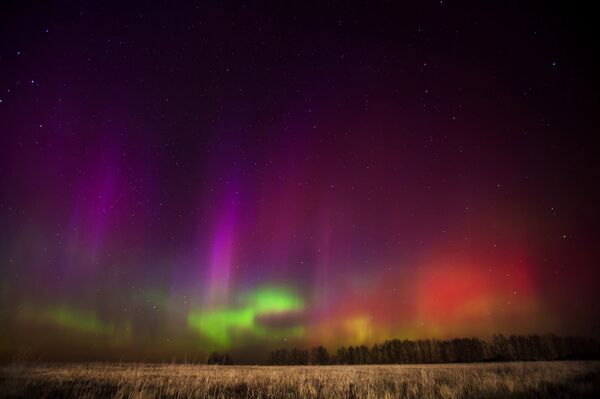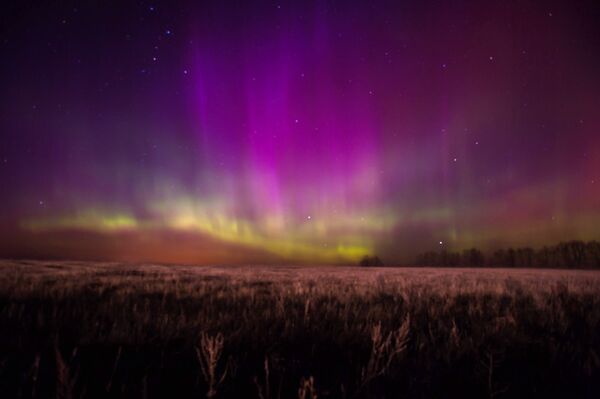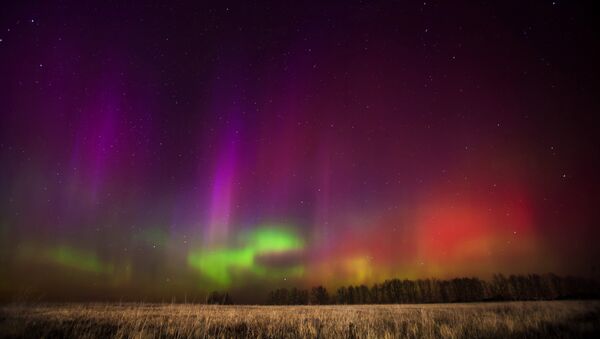
The northern lights, as seen in the Ryazan region of western Russia
© Sputnik / Igor Podgorniy
/ According to the Space Weather Prediction Center the solar storm has been sporadically peaking at G4 intensity on the five-point scale. Scientists believe it to be the result of two coronal mass ejections from an active sunspot.

The northern lights, as seen in the Ryazan region of western Russia
© Sputnik / Igor Podgorniy
/ Amazing displays of the Aurora borealis could be seen in the Ryazan region of Russia, near Moscow.
The Center reported they have no indications that the solar storm will affect flights or satellite electronics, though researchers believe it could affect some GPS and satellite navigation systems.
"This is one of two severe geomagnetic storms that we have experienced during this current solar cycle," Thomas Berger, director of the Space Weather Prediction Center told NBC.


